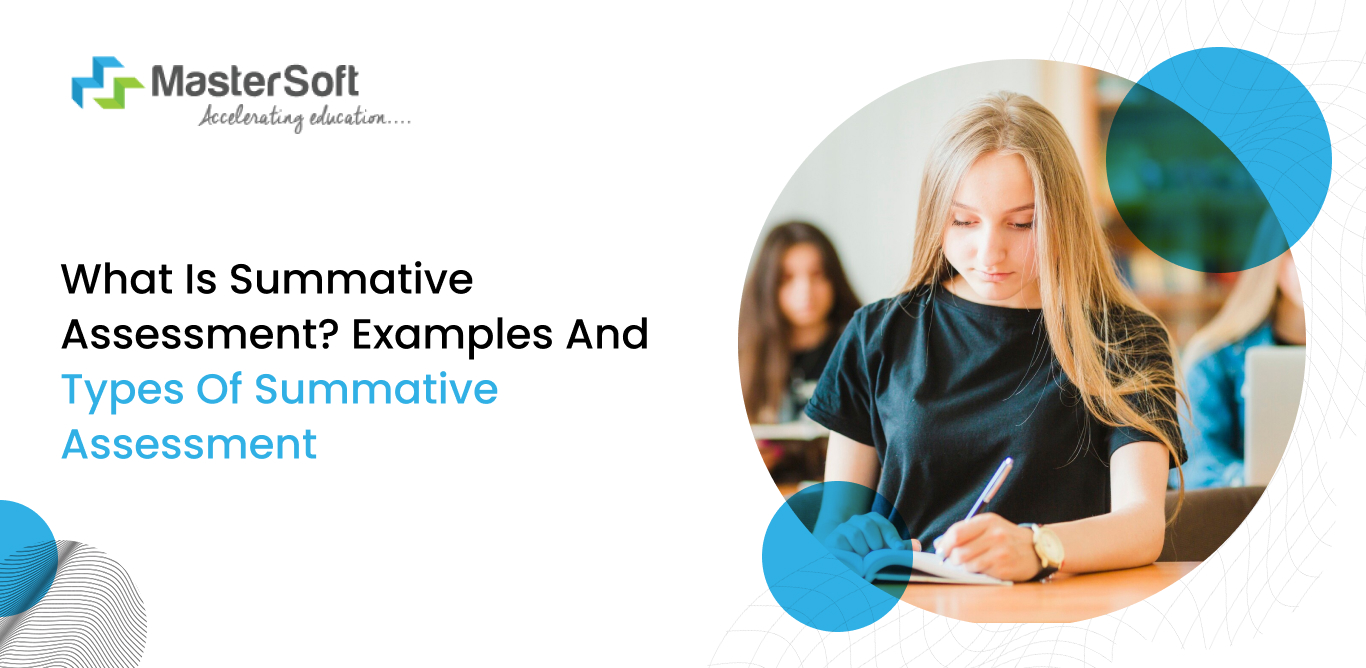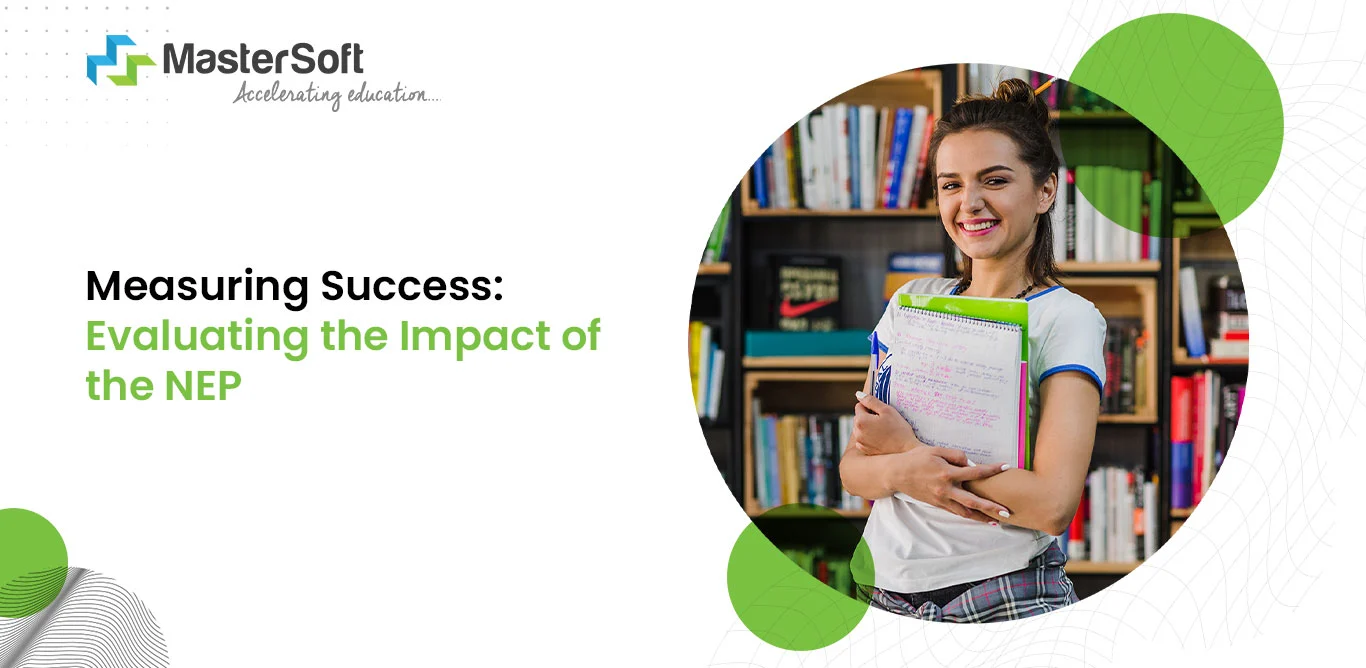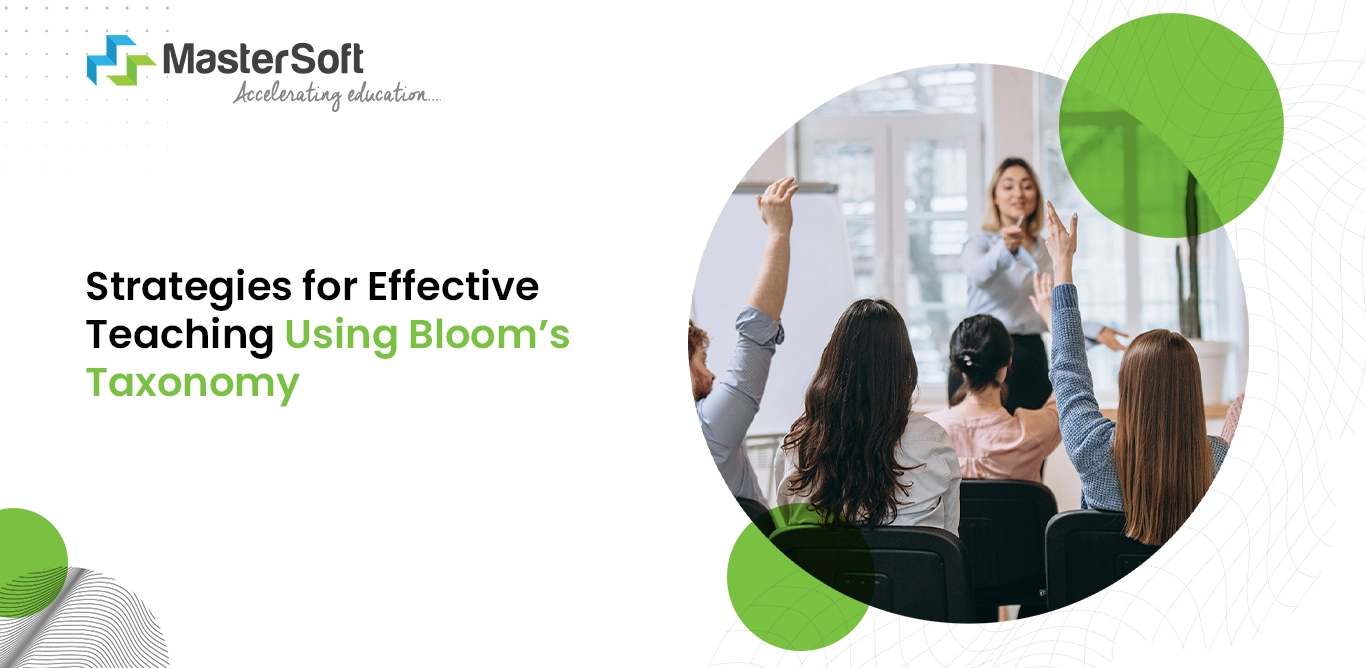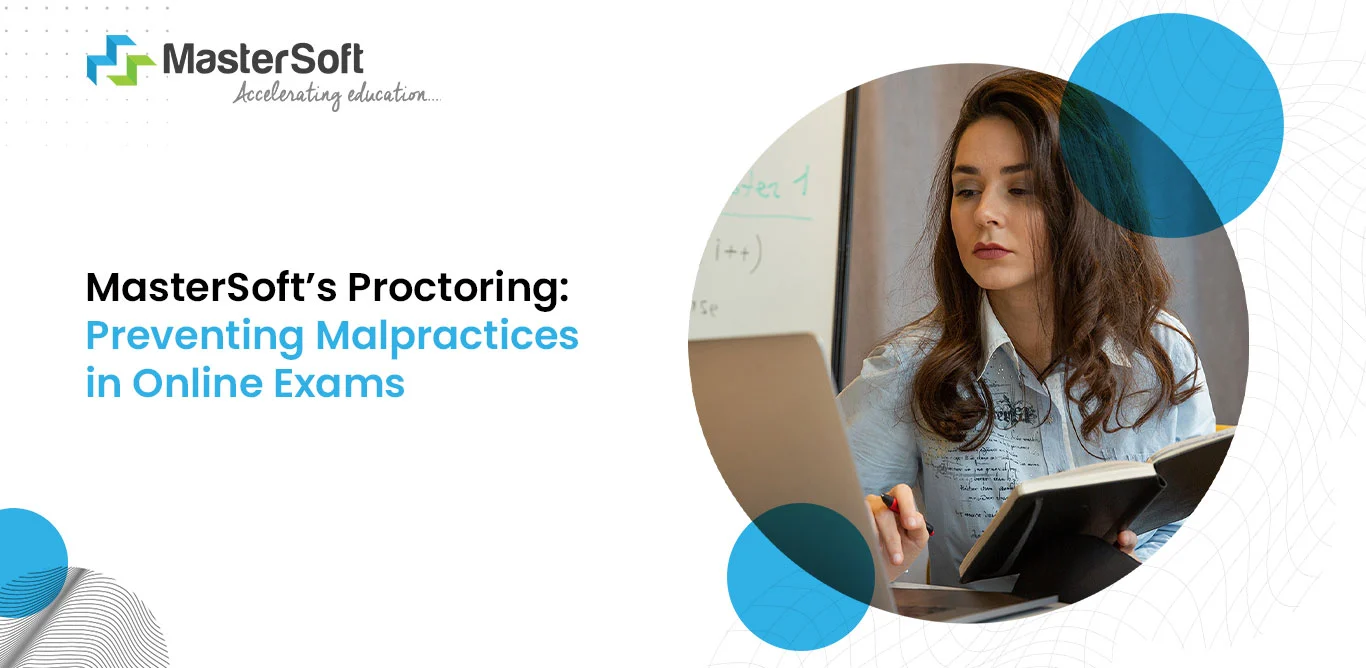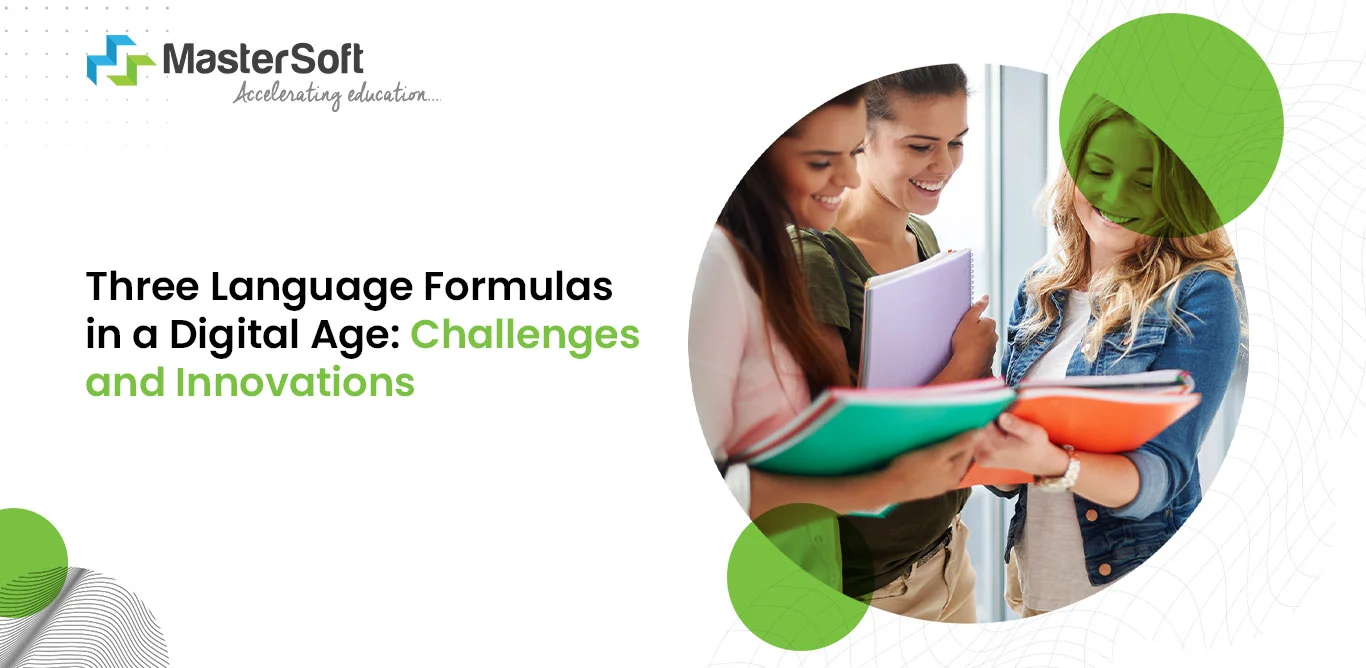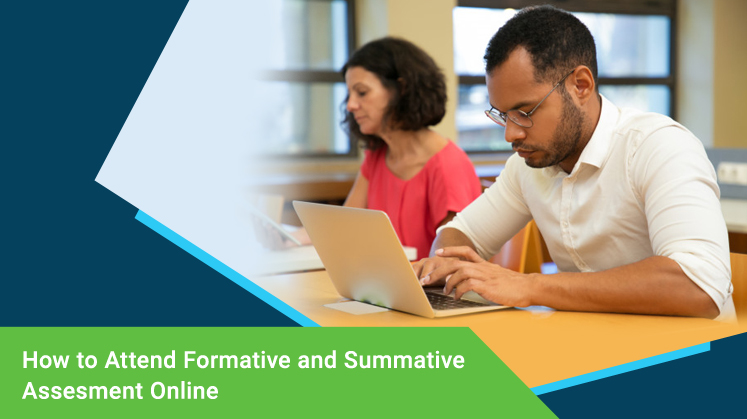12, Dec 2022
Repeated revisions of a difficult subject topic, practicing specific mathematics sums over and over again, and studying for hours are indicative of upcoming exams. The pressure to do well often causes stress and anxiety; no wonder students often wish for an academic structure without exams. So, what if schools stopped conducting tests? Wouldn’t it be a big relief for students?
No matter how distressing the exams are, institutes need to conduct them to evaluate the students' performance. Therefore, we have a standardized examination system like summative assessment that enables instructors to assess students' subject knowledge at the end of a term. Additionally, you must note that it provides a yardstick according to which students study and prepare themselves.
What is Summative Assessment (SA)?
Summative assessment is a technique that most institutes apply to evaluate the subject or course knowledge at the end of the program or training. Moreover, it is a significant procedure for assessing students’ proficiency, basic or advanced knowledge and class performance. In addition, schools and colleges facilitate the procedure by comparing what they know and what they should have learned by the end of the term.
Also, SA mainly focuses on assessing outcomes based on pre-established standards or guidelines. Institutes have been conducting SA in a traditional way that directly monitors students' knowledge and ability. However, the advent of online classes and e-learning led to the adoption of online assessments, so institutes and organizations used the digital platform to analyze students and candidates.
Furthermore, one of the most notable instances of SA is end-of-the-semester college examinations or school final exams. In both cases, the faculty is responsible for developing questions that encapsulate different topics subject-wise in sync with the course curriculum. And the students must respond to these questions with accurate answers in their own words, similar to microlearning exercises.
What is the Difference Between Formative and Summative Assessments?
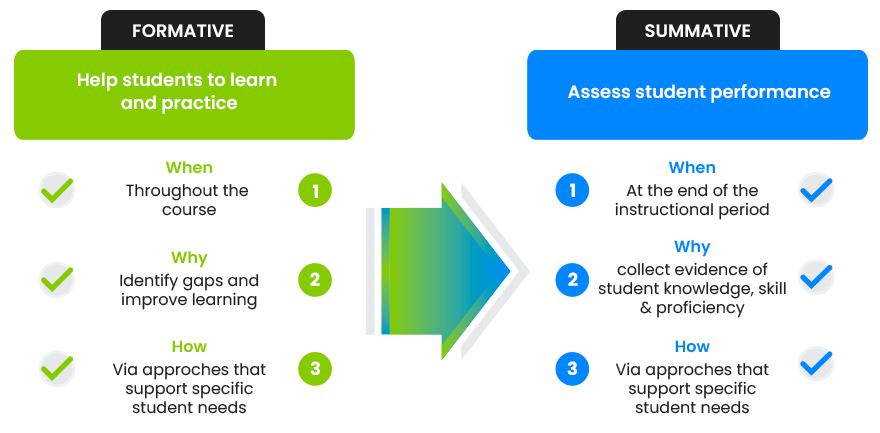
The goal of summative assessments is to provide an overview of what students have learned throughout a course, semester, or a specific unit of study. Moreover, it helps them assess the cumulative knowledge and skills that students attained over a particular period. At the same time, it helps the institute deduce if they are ready to get promoted to the next level.
SA are high-stakes examinations, including program admission or final grade tests, that require reliability and validity. Hence, the faculty must follow precise guidelines while writing exam questionnaires like multiple-choice items.
Also, they must observe accurate rubrics and a consistent evaluation structure for written and oral responses. Consequently, it will allow them to measure student achievements correctly.
In stark contrast, formative assessments are low stake exams that teachers continuously conduct to assess the ongoing student progress. Furthermore, these assessments help teachers identify individual student-related issues, allowing them to make instructional decisions.
As opposed to SA’s year or term-end analysis, formative assessments provide clarity on what students learned over a week or a month. Hence, one can say that the difference between formative and summative assessments lies in the way that institutes conduct them. However, it depends on the institutes and teachers as to how they use the exam results. For instance, they can either use the results to make strategic changes to students’ learning experiences or evaluate the course’s effectiveness
What Is Formative Assessment? Examples And Types Of Formative Assessment
How to Conduct Summative Assessments?
When it comes to students' performance evaluation, institutes and teachers cannot stick to any singular approach. Hence, they utilize both formative and summative assessments accordingly; meanwhile, it is equally important to follow specific criteria in both cases. For instance, the following are the ideal attributes of conducting SA:
Validity
You must ensure that the summative assessment evaluates a student’s capability in a particular subject matter in sync with learning outcomes. Similarly, the exam must align with the course objective; for example, an engineering course must include projects and assignments that aim to determine students' practical knowledge of core topics.
Reliability
SA must follow a standardized knowledge-based assessment method that helps indicate a student’s proficiency in a subject or field. Consequently, the end result is accurate and consistent, enabling teachers to rely on the method for further assessments.
Ethical
Instructors must follow strict guidelines while implementing SA, and students must also follow exam rules, including not using any unfair means during the examination.
Summative Reporting
The main point of conducting summative assessments is to evaluate what students have learned at the end of a particular course or program. So, after the exam's end, instructors must provide a clear and concise report depending on the theoretical and practical performance.
Examples of Summative Assessments

1. End-of-term Examinations
You must be aware that end-of-term examinations are standardized assessments that institutes have been conducting for the longest time. Besides, it has a basic structure wherein teachers develop relevant questions, and students reply to them within a specific time limit. Also, these examinations are a specific program’s final review.
Furthermore, the examinations analyze students’ subject matter knowledge and generate quantitative results, enabling teachers to grade or score their performances. Previously, teachers manually organized exam data, which took time and effort. Thankfully, they can rely upon student management data which helps to conveniently collect, store and maintain all student-related data.
2. Mid-term Examinations
As the name suggests, the mid-term examination takes place in the middle of the session, helping teachers assess how far students have progressed in the academic year. Additionally, it allows them to determine students’ understanding levels of key chapters or core concepts. As a result, it helps learners assess their progress, aiding them in preparing for final examinations.
3. Standardized Admission Tests
Institutes hold tests for students before admission to a course or program in higher educational institutes. Consequently, they get admission depending on their performance in the exam and pre-established cut-off marks.
4. Practical Assignments
Assignments and projects are an integral part of the examination that students need to complete within a deadline. Therefore, faculty provide particular assignments for respective subjects with clear and precise guidelines. For instance, during the submission day, students are required to demonstrate a thorough presentation of the assignment to the teacher.
As a result, teachers get the chance to directly determine students' skills and abilities in real time. Moreover, it is one of the significant benefits of SA because teachers can identify students' strengths and provide them with valuable feedback.
5. Formal Essays
Formal essays are a common question in summative assessments that allows students to demonstrate their knowledge level. Besides, it is a distinctive question type that teachers can use to determine learners’ understanding capability. It allows students to explain their thought processes and perspectives about a subject matter in descriptive prose.
In Conclusion,
Summative assessments are an effective evaluation approach that helps teachers examine students’ grasp of the subject matter, course or program. However, combining it with formative assessment techniques is essential to facilitate a comprehensive student assessment system.
Secure and Robust Online Assessment System for Seamless Exam Conduction!
Mobile: 08448010216
Email:info@mastersofterp.com

